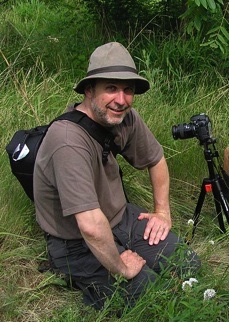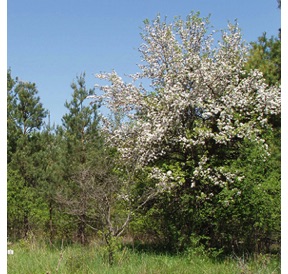Apples everywhere


People love apples. From their original home in Eurasia, apples have spread around the world to every place where people are able to grow them. We cultivate them in orchards and plant them in our yards. Inevitably they escape, forming feral populations, sprouting up from cores we carelessly cast aside, carried off by the wildlife that share our taste for them, or simply persisting, abandoned, when we move on and leave them behind.
A dark side, too?
Yes, we love apples, but how do they affect the environments where they grow? In southern Ontario we have a close relative of the domestic apple, the Sweet Crabapple (Malus coronaria). Research in our lab at the University of Guelph has shown that when domestic apples (Malus domestica) grow close to the native crabapples, many of the seeds produced by the crabapples are hybrids with domestic apples. We are working to understand the impact of this hybridization on the native populations.
Feral domestic apples may prove to provide a valuable role in maintaining native polinator species. However, they may also harbour pests that damage apple crops in nearby orchards.
Who we are and what we're doing
Dr. Brian Husband is the principle investigator of the Plant Population and Evolution Research Lab in the Department of Integrative Biology, University of Guelph. Paul Kron is his research associate. With the help of students in the lab, we have been studying domestic apples and their interactions with native Sweet Crabapples for several years now.
Fall 2023 and beyond
We are in the process of wrapping up this project in its current form. When plans for 2024 are finalized, we will post updates here.
We are no longer accepting apple samples for testing. For testing alternatives, please visit our Test My Tree page.
Dr. Brian Husband
Paul Kron
Apples are not just part of our culture, they're part of our landscape. They brighten hedgerows and the edges of woodlots with their flowers in the spring, and litter the ground with their colourful bounty in the fall. From their places along country roadsides and trails, they hint at a history of farms and orchards that may themselves have disappeared, and in their variety of shapes, colours and flavours, remind us that what we find in a modern grocery store only touches on what an apple can be.
Most recently, we have been focusing on the genetic composition of feral apple populations, trying to better understand the diversity in the feral apple population in Ontario. We have a special interest in learning how the feral apples are related to cultivated varieties (cultivars), especially heritage cultivars.
Many of these older cultivars have disappeared from our awareness and our grocery stores, and in some cases, may have vanished altogether. Yet, they may have left a distinct imprint in the feral apples of Ontario.

Native bee on domestic apple blossom

